2024 Schedule
Continuous Improvement of the "Maintenance Defect"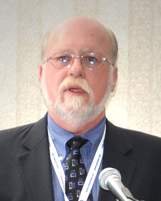 Presenter: Brian Malloch
MMP Instructor, Humber Polytechnic
Description:
In this presentation, Brian Malloch will discuss the following goals: align continuous improvement (CI) terminology with performance management (PM) analytics in maintenance and asset management; align terminology associated with continuous improvement of maintenance and asset management through the PDCA cycle; introduce the “maintenance defect” and its impact on “customer satisfaction”; establish customer expectations as foundational goals and objectives of maintenance and asset management; and reintroduce “study and observation” in PDCA as a focus on reducing operational and financial impact of maintenance defects, while improving customer satisfaction. About the Presenter:
Brian Malloch’s 45 years of experience in various roles in maintenance and asset management beginning with aircraft and helicopter maintenance and overhaul led to industrial maintenance, maintenance management, executive leadership, and consulting roles. His semi-retirement led to ongoing MMP instruction and engagement with PEMAC on the Board of Directors and as PEMAC’s president. |
Breaking Down Silos: Harnessing Large Language Models for an Integrated Management System Presenter: Alex Afshar
Founder and Managing Director, Dolanto
Description:
In the dynamic landscape of contemporary business operations, organizations face the pressing challenge of adhering to a broad spectrum of regulatory requirements while pursuing operational excellence. This presentation delves into the transformative potential of AI in revolutionizing integrated management systems, enabling increased delivery of value, and compliance.
Through detailed case studies and empirical evidence, with a particular focus on the deployment of AI tools, Alex Afshar will demonstrate the practical benefits and innovative methodologies of AI applications.
The deployment of these tools not only enhances organizational effectiveness and compliance but also provides a blueprint for leveraging AI technologies to streamline compliance processes and elevate management systems. This presentation proposes a data-driven strategy for harnessing AI to achieve effective and efficient business solutions. Keywords for this presentation include: Integrated AI, Compliance Management, Integrated Systems, ISO Standards, Empirical Evidence, Case Studies, Structured Data, Unstructured Data, Impartiality, and Asset Management. About the Presenter:
Alex Afshar is the Managing Director at Dolanto, a consultancy dedicated to shaping infrastructure stories that guide investment decisions. With over two decades of experience, Afshar has played pivotal roles in strategy design, policy influence, and operational tactics across the transport, healthcare, telecommunications, and mining sectors in Australia, the Middle East, and North America. |
Change Considerations and Stakeholder Roles Needed to Make Maintenance Parts Management Successful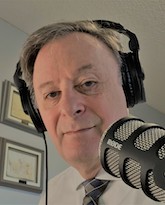 Presenter: Donald (Don) Barry
Principal Consultant, FAHM Technology Partners
Description:
Most successful organizations recognize maintenance parts management as a key factor in asset management success and essential to the processes supported in an EAM. Culture and change enablement are critical success factors in achieving asset management reliability and excellence, operational excellence, and the enterprise’s fundamental supply chain value proposition. This presentation introduces the complexities of a typical parts management network and a case study list of stakeholders typically needed to support parts management across an asset lifecycle. Many areas must be addressed to drive toward maintenance parts management excellence, including the critical issues found in many organizations striving to achieve maintenance parts management excellence, why it takes a community to drive maintenance parts management excellence, key benefits experienced by organizations that get it right. About the Presenter:
Donald Barry is the Global Practice Lead for FAHM’s Asset Management practice. Barry is experienced in helping clients with predictive asset analytics, supporting asset management strategy, reliability, Maximo, and APM solutions. He previously acted as the Global Center of Competency (CoC) Lead / Advisor in Predictive Asset Analytics for IBM’s Global Asset Management Practice. Previous to his global role, he was an associate partner, leading IBM Canada’s Supply Chain and Enterprise Asset Management Practice (for 15 years), experienced at creating distribution process improvements and developing inventory reduction strategies with increased service levels. He specializes in solving asset management, distribution, and asset re-utilization business problems. His in-depth experience includes world-class inventory optimization and re-utilization techniques and leading the co-ordination of many service business mergers and divestitures. He has over 42 years of experience in service delivery support systems and application development, including three years in field service management and 15 years directly in business process development and supply chain management. |
Operational Risk Management for Safety, Integrity and Resilience: Stories of Catastrophe and Near Miss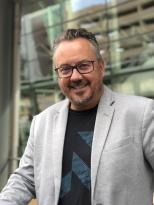 Presenter: Paul Daoust
Founder, Managing Director, Scio Asset Management Inc.
Description:
All the momentous industrial catastrophes appear to be a series of unfortunate events. Upon closer examination, however, we learn of compromised people, process, and technology layers of protection to prevent or mitigate those unacceptable consequences, with each barrier failure quite manageable (if only we chose to see them). Join Daoust as he presents a case study on developing a practical operational risk management practice to ensure people’'s and assets’' safety and integrity while improving operational resilience with near-miss stories relevant to many process industries, including yours. About the Presenter:
Paul Daoust has almost 30 years of experience in asset management and operational excellence in the energy sector. As the founder of Scio Asset Management, Daoust is declaring war on mediocrity and empowering progressive operational leaders to make better decisions to stop value leakage in their organizations through learning, coaching, advising services, and technology solutions. As founder of TheAsseteers.org, a learning and sharing community, Daoust is a leading international advocate for asset management professionals and industrial and infrastructure asset-owning organizations. |
Execution of RCM-R Project for the Anaerobic Sludge Digestion Process in the Wastewater Treatment Plant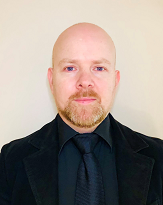 Presenter: Philip Lawlor
Manager, Treatment Plant Maintenance, Regional Municipality of Halton
Co-presenter:
Azie Seif Reliability Engineer Description:
As part of a comprehensive, corporate-wide reliability improvement program, RCM-R analyses were conducted to determine the most appropriate maintenance program to sustain reliable operations for the anaerobic sludge digestion process. The method employed, “Reliability Centered Maintenance – Re-Engineered,” (RCM-R), is an analysis method based on the standard SAE JA-1011 with several enhancements for compliance with ISO 31000 (Risk Management), 14224 (Reliability Data Interchange), and 55001 (Asset Management). In the context of RCM, the assessment involves not only identifying the risks associated with each potential failure but also categorizing the risk levels into four classifications: high, medium, low, and acceptable. This classification, determined through a matrix, is crucial for selecting appropriate solutions to mitigate identified risks. The risk figures indicate which failure modes are more critical and, as such, more likely to have tasks defined. To establish clear system boundaries, inclusions, and exclusions, and to understand the consequences of asset failure in operation and its overall importance to the business, functional block diagrams were developed. Throughout the RCM-R process, the functional block diagram played a pivotal role in examining the operating context and identifying potential failures. Unless otherwise requested, the scope of this RCM-R includes the digester sludge feed system and valve, digester cover safety equipment, digester sludge heating system, primary digester tank, and secondary digester tank. About the Presenter:
Philip Anthony Lawlor is an experienced professional in maintenance and asset management with over 23 years of experience dedicated to private and public sector industries. He holds a Master’s in Quality Management, a Post-baccalaureate Diploma in Innovation Management, and a Specialist Diploma in Lean Systems. Additionally, he is a Certified Asset Management Professional (CAMP) and Assessor (CAMA). Lawlor works full-time as the Manager of Treatment Plant Maintenance at Halton Region, where he is part of a high-performing team responsible for the smooth operation and effective maintenance of water and wastewater treatment plant assets. With his leadership experience as Director of Maintenance and Reliability, Maintenance Management, and other leadership positions, Lawlor brings a wealth of knowledge from a diverse array of industrial sectors across Europe and Canada, providing him with a comprehensive while practical understanding of maintenance, reliability, and asset management principles. Lawlor’s contributions in the field have earned him recognition from organizations like Engineers Ireland, MEETA, PEMAC Asset Management Association Canada, and others. His work has been acknowledged through awards and publications, which reflect his commitment to sharing best practices and acknowledging the collective efforts of teams. 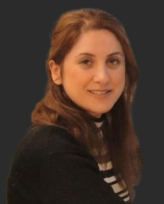 About the Co-presenter: Azadeh Seif is an experienced Reliability Engineering Specialist with a Master’s in Reliability Engineering from the University of Alberta. Her distinguished background spans the oil and gas industry in the Middle East, the oil sands sector in Canada, and the public sector, where she has developed deep expertise in reliability and maintenance practices.
As an RCM-R Brown Belt-trained facilitator, Azadeh brings substantial experience in both equipment and process reliability, with a strong technical foundation in the RCM-R method. Her expertise extends to RAM analysis, Weibull Analysis, Life Cycle Cost analysis, and the development and monitoring of Key Performance Indicators (KPIs). Azadeh is also well-versed in international standards such as ISO 50001, ISO 14224, SAE JA 101, and SAE JA 1012, which she effectively integrates into her work to enhance reliability and asset management. This comprehensive skill set allows her to apply best practices across various sectors, ensuring optimized maintenance strategies and improved asset performance.
In her current role at Halton Region, Azadeh is part of a high-performing team responsible for the reliable operation and maintenance of water and wastewater treatment plant assets. Her experience includes various sectors, including Alberta’s mining industry, the refinery industry, and municipal water and wastewater treatment facilities. Additionally, she applies Reliability-Centered Maintenance-Reengineered (RCM-R) principles to guide optimal maintenance decisions.
|
Maintenance Projects Failure: Navigating the Path to Success Presenter: Serah Sanni
Director of Operations, TRO Maintenance Solutions
Description:
Maintenance projects are pivotal for asset longevity and efficiency, yet they are marred by high failure rates. This presentation will investigate the root causes of these failures, with a special focus on human factors, proposing a shift toward innovative methodologies, such as ‘The Flexible Thinker,’ to mitigate these issues.
The research highlights the importance of workforce engagement and psychological safety in ensuring project success. It explores the significant impact of project failures on asset performance, organizational costs, and employee morale. By examining expert insights, case studies, and industry benchmarks, the presentation will demonstrate how adopting cutting-edge technologies and methodologies that offer predictive solutions can transform maintenance project outcomes and ensure sustained operational efficiency of assets. About the Presenter:
Serah Sanni, Ph.D., is the Marketing Manager at TRO Maintenance Solutions. She blends a versatile expertise in project and asset management while exploring her unique skills in agility, mediation, and leadership. With a professional background as an educator, agile project manager, and lawyer, Sanni has made significant strides in team collaboration, stakeholder management, and project successes. Her diverse expertise has been instrumental in fostering robust partnerships and achieving key organizational milestones. Over the years, Sanni has consistently demonstrated her ability to spearhead innovative strategies. She has effectively enhanced market presence, boosted client engagement, and delivered efficient maintenance management solutions, thereby driving significant advancements. Sanni employs industry-leading methodologies and tools to skillfully manage human and material resources toward excellent project delivery. Her holistic approach integrates varied disciplines, enhancing team performance and project outcomes. |
Keynote: Climate Change and How to Maintain Our Biggest Asset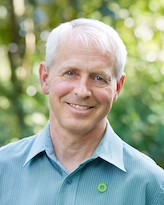 Presenter: Carl Duivenvoorden
Speaker / Writer / Sustainability Consultant, Self-Employed
Description:
Energy makes our world go round, but climate change requires that we transition to non-emitting sources as quickly as possible. Carl Duivenvoorden will share thoughts on where we are, where we need to go, and how we’ll get there. About the Presenter:
Carl Duivenvoorden was raised on a dairy farm in northern New Brunswick. His diverse early agricultural career took him to over 25 countries. But from his early days in the village of Belledune, Duivenvoorden always had an uneasy concern about human impacts on our global environment. In 2006, he read "An Inconvenient Truth", the book that catapulted climate change onto the global agenda. In April 2007, he became one of the first Canadians to be personally trained by former U.S. Vice-p resident Al Gore to present live versions of his Academy Award-winning documentary. Since then, he’s worked as a speaker, writer, and sustainability consultant, helping people and organizations learn how they can save money, energy, and our environment. He has presented to over 450 audiences, and his column, Green Ideas, ran for 10 years in New Brunswick dailies. |
PM Optimization Workshop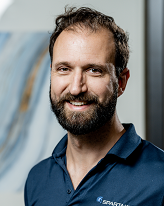 Presenter: Yoann Urruty
Director of Technologies, Spartakus Technologies
Description:
In this workshop, we’ll learn how maintenance teams can define the right task to be done, at the right time, the right way, by the right person.
We’ll alternate theoretical content with a practical exercise in dedicated software with visuals of a conveyor that has poor maintenance strategies. During the workshop, participants will collaborate on building the asset hierarchy and drill down to component levels, define failure modes, analyze the risk per failure mode, and address the risk by adding tasks, pictures, and measurements.
In the end, we will have a visual before and after the optimization process of all inspection/lubrication/PdM tasks. This will greatly help participants identify the gaps in their maintenance strategies and focus their efforts on what really matters to the sustainability of their operations. About the Presenter:
Yoann Urruty, Eng., CMRP, is a Reliability Engineering Supervisor at Spartakus Technologies with 10 years’ experience as a lubrication technician, oil analyst, reliability consultant, and technical trainer. He has worked with maintenance people in dozens of industrial facilities in North America to establish criticality ranking on their assets, develop/optimize and implement PM programs, participate in RCA activities, and optimize inventories. Urruty is also the creator of Spartakus APM®, a pleasant and light asset health cloud monitoring solution for reliability practitioners. |
Workshop: Your GREEN Filter: Sustainability in Everyday Decisions Presenter: Carl Duivenvoorden
Speaker / Writer / Sustainability Consultant, Self-Employed
Description:
It's said that a typical person makes thousands of decisions, large and small, every single day. What to wear? What to eat? Where to go? How to get there? No wonder we feel stressed! And many of those decisions have an "environmental footprint": an impact, large or small, on our planet. No wonder the planet's feeling stressed, too. Most of us want to minimize the environmental consequences of our everyday activities. But often we donʼt know how, or weʼre just too busy to pause and think about it. In this lively and interactive session, Carl Duivenvoorden will demonstrate how we can all minimize the environmental impact of our everyday activities, simply by applying a GREEN Filter to our lives. He'll explain how our everyday decisions are guided by our unique internal "filters"-how even something as simple as getting a round of coffee involves a string of decisions-each of which has an environmental impact; the learning continuum, four steps to lasting behavioural change; and how a GREEN Filter can help anyone make more earth-friendly decisions every day, everywhere! Your GREEN Filter wraps up with a fun audience exercise that will have everyone thinking, and living, more sustainably every day. About the Presenter:
Carl Duivenvoorden was raised on a dairy farm in northern New Brunswick. His diverse early agricultural career took him to over 25 countries. But from his early days in the village of Belledune, Duivenvoorden always had an uneasy concern about human impacts on our global environment. In 2006, he read "An Inconvenient Truth", the book that catapulted climate change onto the global agenda. In April 2007, he became one of the first Canadians to be personally trained by former U.S. Vice-p resident Al Gore to present live versions of his Academy Award-winning documentary. Since then, he’s worked as a speaker, writer, and sustainability consultant, helping people and organizations learn how they can save money, energy, and our environment. He has presented to over 450 audiences, and his column, Green Ideas, ran for 10 years in New Brunswick dailies. |
The Use of Reality Scans To Update and Restructure the Asset Register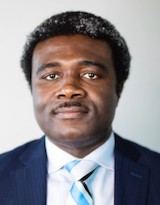 Presenter: Henry Adarighofua
Senior Manager, Enterprise Asset Management Delivery, ReVisionz
Co-presenter:
Philip Schachtner Partner Description:
Many organizations execute their asset management plans on incomplete asset registers. In many cases, this is the result of old and outdated engineering information, many MoCs that were not updated in the asset register, or insufficient rigour in managing the asset register. An incomplete asset register is one of the most basic risks in the asset management process; it is the "risk of the unknows," while assuming that "we have all our assets," or that "someone will do something about it." This presentation will demonstrate how a reality laser scan can be used to confirm the "as-is" state of the physical plant and equipment, how it can be leveraged to update the completeness of the asset register, and how it can identify outdated or duplicated assets in the asset register.
The presentation will include the following: the value of ensuring that the asset register is up to date; how reality scans can be used in place of missing engineering drawings and information; how reality scans can be used to confirm the as-built status of engineering
drawings or 3D models; and how the location and asset hierarchy in an EAM system can be updated and restructured based on reality scans. The presentation will include case studies and findings from two projects that leveraged reality scans. About the Presenter:
Henry Adarighofua is an active professional engineer with a degree in Mechanical Engineering. He has about two decades of experience in maintenance, reliability, operations, and asset management, driving excellence in these areas. Adarighofua has successfully led teams in implementing best practices in asset management, improving operational efficiency, and achieving sustainable results. With a proven track record of spearheading initiatives that deliver tangible business outcomes across various continents, Adarighofua is dedicated to sharing practical insights, actionable strategies, and industry successful practices to inspire and empower conference attendees to elevate their maintenance and reliability practices to new heights.  About the Co-presenter: Philip Schachtner is an EAM Specialist with a degree in Mechanical Engineering. He has over 30 years of experience in Maintenance, Reliability and Asset Performance, and an in-depth knowledge of EAM Systems. Philip has led EAM data quality improvement and master data standards projects for many clients across North America and assisted clients with his expertise in standards including ISO55000, IAM, ISO14224, CFIHOS, SMD, PIDX, and SMRP best practices and performance measures.
|
Developing an Inclusive Workforce: Expanding Inclusion in Maintenance, Reliability, and Asset Management Presenter: Blair Carmichael
Description:
Our world is ever-changing. The maintenance and asset management world is predominantly dominated by men, but that is shifting. But it can only shift if the people at the top create a welcoming workforce. As supervisors, managers, executives, and employees, it is our job to make everyone on our team feel welcomed. If we do not change and create a welcoming environment, we will miss out on new ideas and concerns that these individuals bring to the table. This workshop will include discussions on identities, privilege, and bystander interference, and on creating a welcoming work environment. It will also focus on activities such as privilege sale, 5 Ds to bystander interference, and employee profile situations. About the Presenter:
Blair Carmichael (they/them) grew up in North Bay, Ont., the Gateway to the North. Carmichael has their B.Comm. and BBA from Nipissing University and their MBA from the Australian Institute of Business, and is completing their education for PEMAC’s CAMP. They are currently working as an Asset Management Specialist at Ontario Northland Transportation Commission on the program team to implement a new asset management transformation. Carmichael identifies as non-binary and is a strong believer in making the world more inclusive. |
Maintenance Readiness for Greenfield and Brownfield Projects Presenter: Eric Delorme
Director Asset Optimization NA, Ausenco
Description:
Building and commissioning a new industrial facility or improving an existing one is both rewarding and challenging—rewarding because your company is growing and generating more revenue, and challenging because there are thousands of tasks that must be accomplished before revenue is generated. This is why careful planning for maintenance readiness and long-term asset management is critical. There are multiple aspects to consider and think about at the project viability phase and that need to be included in your project budget. At project execution there are many management and technical aspects and best practices to implement. Following the project commissioning, you also need to make sure that all the hard work done will generate the expected value, especially for the first year of operation. Many elements need to be controlled. Site personnel will be under pressure and involved in all kinds of events after the commissioning. There are high risks to develop shortcuts and other bad behaviours that will be difficult to recover later. You need people with an objective eye to evaluate the situation and experienced personnel that know about new site or project early operations and best practices. A good maintenance readiness program is key to having your capital investment providing value from the start and that can also be sustained. Maintenance readiness is greatly reducing the risks for the business. About the Presenter:
Eric Delorme is a Mechanical Engineer (University of Montréal École Polytechnique) and has an MBA in Business Management from Laval University. He has 30-plus years of experience in asset management across multiple industries and geographies, including 17 years in asset management consulting. Over his career, Delorme has worked with companies in primary and secondary aluminum production, mining, metals, pulp & paper, manufacturing, airports, food processing, and construction. His field of practice includes mechanical engineering, project engineering, process engineering, reliability engineering, and maintenance management. Throughout his career, Delorme has continuously worked on cost reduction and production capacity improvement projects and implemented new techniques and tools. He has conducted reliability benchmarks and developed improvement action plans related to maintenance and reliability strategy, business processes, planning and scheduling, equipment maintenance programs, shutdown management, bad-actor management programs, Reliability Centered Maintenance, Root Cause Failure Analysis, Key Performance Indicators, change management, and more. Delorme worked many years for Alcoa Deschambault Smelter, which won, in 2002, the North American Maintenance Excellence award. He has been involved in maintenance readiness projects from both the owner and consulting sides. |
The Application of Modern Maintenance and RCM Principles to Improve Asset-Intensive Industries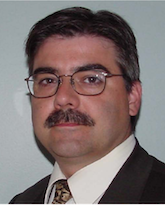 Presenter: Ron Doucet
Principal, RYKE Reliability Inc.
Description:
The fundamentals underpinning the RCM process form the basis for all modern maintenance principles. These fundamentals established a new understanding of maintenance, yet the RCM process is still not well understood. And those that do not understand the process or the principles propagate the myth that it is difficult and time-consuming.
More important than the RCM process itself are the underpinning principles on how assets fail and how to develop the strategies to manage these failures.
This presentation will create a paradigm change in the management of failures by reviewing and explaining all of the underpinning RCM principles and conclude with examples of how these principles can be used.
The presentation will discuss all categories of failures and all possible solutions, including those involving human error. It will also show how the RCM principles can be used for task formulation, PM task review, root cause failure analysis, and spares determination. The above will be supported by case studies. About the Presenter:
Ron Doucet is a professional engineer who has been improving the performance of assets, departments, and companies for over 30 years. Doucet always had an intolerance for repetitive failures, and this was one of his primary focuses in every department he worked in or led. In industry, Doucet had the privilege of doing the analyses on how to improve performance and led the implementation and transition to a culture of reliability, in tandem with leading the day-to-day operations. This enabled him to develop real-life and proven methodologies to improve the performance of assets and road maps to improve the performance of asset-intensive businesses. Doucet had the opportunity to be trained by the late John Moubray, the globally recognized expert in RCM and the author of the book RCM II, in which he received an honourable mention based on his successes in RCM and the application of its principles. Doucet is the developer of RCM-based improvement processes, including PMO Pro®, RCS Pro®, and RCFA Pro®, and he developed the process for improving the performance of asset-intensive businesses known as The RYKE Way. In 2010, he set up RYKE Inc., a reliability solutions provider focused on improving the performance of asset-intensive businesses and providing training and mentoring in RCM and RYKE’s improvement processes. Doucet is an active instructor in PEMAC’s MMP program. |
Preventive Maintenance: Starting from Scratch Presenter: Louie D'Orazio
Professional Engineer/Professor, Mohawk College
Description:
Preventive maintenance is crucial for various reasons across different industries and sectors. One of the primary benefits of preventive maintenance is cost savings. By regularly inspecting and maintaining equipment, potential issues can be identified and addressed before they escalate into more significant problems. Increased Equipment Reliability: Regular maintenance ensures equipment is in optimal working condition. This increases reliability and reduces the likelihood of unexpected breakdowns. Extended Equipment Lifespan: Proper maintenance can significantly extend the lifespan of equipment. Improved Safety: Well-maintained equipment is less likely to malfunction or pose safety risks. Consistent Performance: Regular maintenance helps maintain consistent performance levels of equipment. This is crucial for industries where precision and reliability are essential, such as manufacturing or healthcare. Regulatory Compliance: In many industries, there are regulatory requirements and standards that mandate regular inspections and maintenance of equipment. Minimized Downtime: Unplanned downtime due to equipment failure can be costly and disrupt operations. Preventive maintenance helps identify and address potential issues before they lead to breakdowns, minimizing unplanned downtime and keeping operations running smoothly. Energy Efficiency: Well-maintained equipment tends to operate more efficiently, consuming less energy. This not only reduces operational costs but also aligns with sustainability goals by minimizing energy consumption and environmental impact. Improved Resale Value: For businesses that plan to upgrade or replace equipment, a well-maintained asset generally has a higher resale value. Enhanced Planning and Scheduling: With a proactive approach to maintenance, organizations can plan and schedule maintenance activities at convenient times, avoiding disruptions during critical periods of operation. This presentation will take you through a situation where a particular company functioned purely on “band-aid repairs” and needed a whole new philosophy to survive. |
Typical problems in Managing Maintenance and What it Takes to Correct Them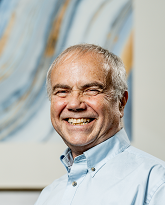 Presenter: James Reyes-Picknell
Managing Consultant, Conscious Asset
Description:
Managing maintenance in challenging economic times, with lean staffing, never enough budget and constant pressure to produce more is no small challenge. Some rise to the challenge using the "Uptime Pyramid of Excellence", others try but fail. Why do they fail? Years of implementing "Uptime" and its inter-dependent activities, have taught a lot of lessons. What works, and more importantly, what doesn't. For large scale transformations - the improvements that lead to big cost savings and increases in capacity, there's one over-arching factor that matters most in making the changes. Learn about the problems that most will encounter, the reasons behind those problems, and the one factor that makes a world of difference in implementing the changes, from the guy who wrote the book and has helped many achieve superior performance gains. About the Presenter:
James Reyes-Picknell is an MMP instructor, PEMAC volunteer, and former board member. He is Founder and President of Conscious Asset, and author of the bestseller Uptime—Strategies for Excellence in Maintenance Management, several other books, and numerous magazine articles. His latest publication in April 2017, co-authored with Jesus Sifonte, is destined to change the RCM world for the better while showing how RCM is an integral aspect of asset management. Reyes-Picknell is a professional engineer, certified management consultant, and a thought leader in the fields of maintenance and asset reliability. He works with clients in asset-intensive industries such as resource extraction and processing, utilities, transportation, and manufacturing, where high reliability is a key to business success. |
Project Risk Process - Workshop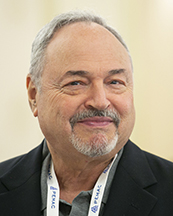 Presenter: Ron Gavrin
Retired, Retired
Description:
The group will participate in a risk identification, assessment and mitigation process.
The topic may be: 1- Risks and opportunities for increased use of Nuclear Power across Canada. Or 2- it may be several risk topics of a general nature so that we can form several risk assessment teams.
Agenda: Facilitator introduces the Risk process in 5 minutes and then leads the teams in quick workshops to identify, rank and respond to risks.
Good for people interested in Risk management in their own industry or to introduce the process to participants new to the process.
Agenda:
Overview of Risk Management process in general
Overview of steps in the workshop 75 minutes.
Introduce Risk topics and assign or let teams pick topic.
Introduce first team task - Risk identification
Teams work on risk list.
Teams display their findings.
introduce second team task - Risk Ranking (assessment)
Teams work ranking of risks and opportunities.
Teams display findings.
Introduce 3rd team task - Risk Responses
Teams work on responses to some risks (as examples)
Teams display findings.
Summarize
Key Risk findings for each topic.
Highlight the process and how it works.
Ask participants for their observations. About the Presenter:
Ron Gavrin, MBA, is retired from a 30-plus-year career as an engineer in various industries: electrical, utility, paper, mining, and petroleum. Most of his career was spent in the nuclear sector with Ontario Hydro (OPG), where he worked as the business superintendent and project controls manager for major nuclear projects in Darlington, Ont., and he has implemented programs in business risk management and nuclear system long-term planning (i.e., strategic asset management). He now teaches project management, risk management, asset management, engineering management, energy management, and cost engineering at various institutions in Toronto. |
How to Successfully Transition From Reactive To Predictive Maintenance Presenter: Bailey Brandel
Solutions Engineer, Prometheus Group
Description:
In today's fast-paced industrial environment, the shift from reactive to predictive maintenance is a critical piece for maximizing equipment reliability, minimizing downtime, and optimizing operational efficiency. This transition is not just about adopting new technologies but involves a fundamental change in how maintenance is approached and managed.
This presentation will guide you through the journey from reactive to predictive maintenance, highlighting key steps, challenges, and best practices. We will delve into real-world customer success stories, showcasing how organizations have successfully implemented predictive maintenance programs.
These examples will provide valuable insights into overcoming common challenges and achieving measurable benefits. By understanding this transformative journey and learning from those who have paved the way, your organization can move from simply reacting to problems as they arise to predicting and preventing them, ultimately leading to more efficient and reliable operations.
Attendees will gain insights into how to build a predictive maintenance strategy, including how to collect and analyze the right data, integrate predictive tools with existing systems, and foster a culture that supports proactive maintenance practices. By understanding this transformative journey, your organization can move from simply reacting to problems as they arise to predicting and preventing them, ultimately leading to more efficient and reliable operations. About the Presenter:
Bailey Brandel is a solutions engineer at Prometheus Group. She has a background in quality, design, engineering, and project management. She earned a bachelor's degree in Bioproducts and Biosystems Engineering from the University of Minnesota. She specializes in routine and capital project management, pairing her technical expertise with a customer-centric mindset. At Prometheus Group, she engages with clients across industries to relay best practices and implementation methods in enterprise asset management |
Multi-week Scheduling: The Key to Implementing a Sustainable Planned Work Culture in Today’s Industry 4.0 Era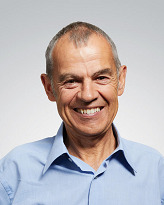 Presenter: Jean Charbonneau
President, CiM Maintenance INC
Description:
Everybody is talking about Industry 4.0 cool technologies, but today, more than 50% of asset-intensive companies are still more than 50% reactive, This workshop covers the fundamental elements required to implement a sustainable planned work culture by implementing an efficient multi-week scheduling process using Industry 4.0 digital technology, which must be explicitly designed to ensure individuals are playing their required roles flawlessly in order for the processes to provide the expected value. This workshop will cover asset performance and maintenance excellence—IPSPEC planned maintenance work execution cycle; implementing an effective multi-week scheduling process using Industry 4.0 technologies to ensure the work required to prevent equipment failures is always done on-time in a planned mode; developing strong teamwork between maintenance and operations with the common goal of maximizing equipment uptime and production output; maximizing the value for multi-site companies by standardizing processes and people roles across the organization; implementing an organization-wide long-term sustainment program to provide permanent value; and measuring and sustaining the value across the organization. About the Presenter:
Jean Charbonneau has over 30 years of experience as a reliability engineer and consultant in asset performance. Twenty-five years ago, he founded the Maintenance Excellence Group, putting together a team of asset reliability experts to assist asset-intensive organizations with performing the right maintenance, at the right time, at the lowest cost. Charbonneau is a worldwide renowned speaker and an industry-leading influencer on the best strategies for asset-intensive organizations to advance to the Industry 4.0 era and maximize their asset performance and production output. |
Benefit-Cost Analysis Tool for Natural Asset Management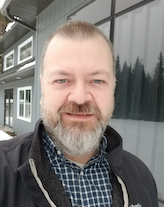 Presenter: Charles Thibodeau
Program Coordinator: Nature-Based Climate Approaches, New Brunswick Environmental Network
Co-presenter:
Annika Chiasson Executive Director Description:
Climate change is here, it is happening, and it is impacting Canadians. However, there are cost-effective and sustainable solutions that provide co-benefits that can help our communities and ecosystems better survive its impact and improve overall quality of life and well-being. Nature-based and natural asset approaches to adapting to climate change focus on implementing infrastructure that restores and protects natural areas while removing greenhouse gases from the atmosphere, reducing flooding and stormwater surge risks, and supporting biodiversity. Although nature-based climate solutions are well supported by scientists and the environmental sector, their uptake on a local level has been slow due to a lack of capacity and resources. The federal, provincial, and many municipal governments have committed to increasing awareness of climate change risks and supporting preparedness as well as developing nature-based solutions to increase resilience and maintain biodiversity. Many communities face high risks of asset management disruption caused by flooding, storm surges, and erosion due to climate change but have little access to resources and capacity and, as such, work needs to be done to support capacity and skill building for local governments on the implementation of nature-based climate solutions. This session will look at a cost-benefit analysis framework and decision-making tool for municipalities to support decision-making and implementation of nature-based solutions to coastal erosion, stormwater surges, and inland flooding. It will provide background on nature-based climate solutions, share the results of a public survey of N.B. residents on nature-based climate solutions, and lead participants through hands-on activities using the cost-benefit analysis framework to inform decision-making. Following this workshop, the New Brunswick Environmental Network will be available for mentoring and training on the tool for municipalities interested in pursuing nature-based climate solutions. About the Presenter:
Charles Thibodeau joins the NBEN as the Nature-Based Climate Approaches Program Coordinator supporting municipalities with climate risk mitigation. Charles is a mechanical engineer with experiences in transportation, energy, climate change, sustainable development, testing and certification, safety and emissions research, as well as regulatory and policy development. He is also a Certified Permaculture Designer and a Community Food Mentor. Whether it is lounging in his solar passive home surrounded by edible landscaping and nature trails in the Acadian Forest, or volunteering at his local community center, he is always focused on nature-based solutions and cooperation.  About the Co-presenter: Annika Chiasson is the Executive Director of the New Brunswick Environmental Network. She has worked for the NBEN for over ten years, starting as a summer student, later as a Program Coordinator for the Children’s Environmental Health Collaborative, and later the Communications Manager prior to becoming the Executive Director. Annika was born and raised in Moncton, NB and has a passion for nature, art, and technology that she brings to her work.
|
Keynote: The Mrs. Dunster's Story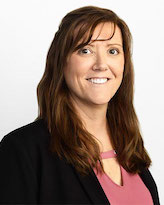 Presenter: Rosalyn Hyslop
Co-Owner/Co-CEO, Mrs. Dunster's Bakery
Description:
Rosalyn Hyslop will take you through the adventures of Mrs. Dunster’s 10-year growth journey, highlighting wins, challenges, and acquisitions, and the inspiring tale of how a community of tradespeople collaborated to construct a 40,000-square-foot bakery within eight weeks amidst a global pandemic. About the Presenter:
Rosalyn Hyslop is a social entrepreneur passionate about her family, the company she co-owns and operates with her husband, Blair, and the communities they do business in. Mrs. Dunster’s is the largest family-owned commercial bakery in Atlantic Canada, with distribution to more than 800 stores and restaurants in Atlantic Canada and Maine in the U.S. Most recently, Hyslop added central and West Coast Costco stores, making Mrs. Dunster’s coast to coast for the first time. Hyslop was named Atlantic Business Magazine’s Top CEO of the Year in 2023 for Atlantic Canada, and this fall, she and her husband are being inducted into the New Brunswick Business Hall of Fame. |
IBM MVI and Monitor - An integrated solution to eliminate organisational and data silos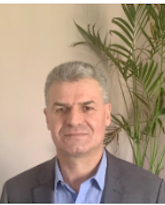 Presenter: Ammar Bessam
Brand Technical Specialist with IBM, IBM
Description:
Communication and collaboration between maintenance/inspection teams and operations is always a challenge. Especially to insure operational effectiveness, safety, and compliance. However, important organisational and data silos still existing in different asset intensive industries.
To fit these gaps, IBM Maximo Application Suite offering introduces an automatic and imbedded one-way bridge from inspection to operational dashboards to visualise all inspection alerts and their impact on operations.
On the source side of this one-way bridge, IBM Maximo Visual Inspection, a revolution of inspection practices, puts the power of computer vision AI capabilities into the hands of quality control and inspection teams. On the target side, IBM Maximo Monitor, a modern IoT platform, helps bring asset monitoring solution to life through the power of AI and allows reaching a higher level of resiliency and sustainability in organisation’s operations.
Using Maximo MVI and Maximo Monitor together will reduce considerably communication deadlines through automatic channels. Instead of waiting for inspection reports to be manually transmitted and build by data costly data analysts, MVI can automatically generate inspection insights based on AI models. Real-time access to this data by both operations and reliability engineers will accelerate decisions making and allows more efficiency in work planning and execution.
Many use cases can be identified in asset intensive industries to use MVI and Monitor together for more streamlined processes. In this paper, we will present a use case that combines different complexity layers: remote monitoring, HSE constrains, multi-site organizations and risky inspections. By implementing this eco-system, organizations can leverage advanced analytics to predict failures, to maximize assets uptime, to optimize MTBF, and to reduce costs.
Using IBM MVI and Maximo Monitor together will significantly eliminate organizational and data silos between the maintenance and operations teams. This will help reducing the information flow delays and ensuring a streamlined maintenance process.
About the Presenter:
Ammar Bessam is a technical/functionnal advisor in the asset management systems implementation and realed processes definition. I contributed in different implementations of Maximo EAMS in different industries and countries. I have published different papers in Maintenance practices, Agile practices and Software architecture. |
Curing the “Everything is Urgent” Production Syndrome in Today’s Industry 4.0 Era! Presenter: Jean Charbonneau
President, CiM Maintenance INC
Description:
In our survey, more than 80% responded that most requests by Production are always urgent and have to be done right away.
When everything is urgent, then there is no priority, and it is the wheel that squeaks the loudest that gets the grease, and the organization operates in a reactive mode.
This presentation identifies the potential cause of the syndrome and explores different methodologies that can be implemented to have production and maintenance work as a single team to ensure the right work is performed at the right time to prevent equipment breakdown and maximize production output
- Fundamental causes of the syndrome
- Potential remedies
- Setting the vision at the Plant manager level
- Restoring the confidence between maintenance and production with a multi-week schedule outlook.
- Making an agreement between maintenance and production on when the work must be done to prevent equipment failure that is clearly communicated to everybody involved.
- Identifying Potential failure intervals and risks of failure based on AI predictive analytics, or experience.
- Ensuring the work required to prevent equipment failure is always done on time.
- Measuring compliance of the maintenance and production time execution agreements, in order to maximize trust and teamwork between maintenance and production
Key Takeaways:
- Having Maintenance and production working as a single team is the foundation to eliminate the “Everything is urgent, syndrome”.
- An effective multi-week scheduling process is the fundamental communication element to bind the team together.
- Maintenance must assure production that all work required to prevent equipment failure will be performed on time as agreed.
- Production must have enough advance notice to release the equipment to perform the maintenance plan on time.
About the Presenter:
Jean Charbonneau has over 30 years of experience as a reliability engineer and consultant in asset performance. Twenty-five years ago, he founded the Maintenance Excellence Group, putting together a team of asset reliability experts to assist asset-intensive organizations with performing the right maintenance, at the right time, at the lowest cost. Charbonneau is a worldwide renowned speaker and an industry-leading influencer on the best strategies for asset-intensive organizations to advance to the Industry 4.0 era and maximize their asset performance and production output. |
Strategic Human Asset Management - Humans are the New Assets. Presenter: Ron Gavrin
Retired, Retired
Description:
The new ISO 55000 asset management standard has expanded the concept of assets to include HR. But is industry really prepared to make informed decisions on HR programs, as they do for physical assets? Furthermore, does industry have tools to evaluate the benefits of various HR programs to mitigate the retirement of an aging workforce, especially in overheated sectors like oil & gas?
The session will review some programs that were introduced in a large utility to mitigate the effects of its workforce retiring, such as mentoring, rejuvenation hiring, and procedures updating. The review will include five different HR strategic programs that were implemented to offset the impact of an aging workforce.
The impacts of these HR programs cannot be evaluated using ordinary engineering economics analysis. However, some tried and tested quantitative and qualitative techniques are proposed that could improve HR program valuation. This session will propose some approaches to evaluate HR decisions in industry, using research methods from academia and based on programs introduced in a large industrial organization to manage the transition as its aging workforce retired. About the Presenter:
Ron Gavrin, MBA, is retired from a 30-plus-year career as an engineer in various industries: electrical, utility, paper, mining, and petroleum. Most of his career was spent in the nuclear sector with Ontario Hydro (OPG), where he worked as the business superintendent and project controls manager for major nuclear projects in Darlington, Ont., and he has implemented programs in business risk management and nuclear system long-term planning (i.e., strategic asset management). He now teaches project management, risk management, asset management, engineering management, energy management, and cost engineering at various institutions in Toronto. |
Asset Hierarchy Realignment in the EAM Tool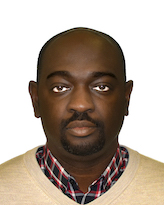 Presenter: Olayemi Akinola
Project Manager, Cameco Corporation
Description:
We were not able to leverage the full capabilities of our EAM tool because assets were not mapped consistently and coherently within our operating sites and across various operating sites of our company.
Therefore, we undertook the project of realigning the assets in our EAM tool. We leveraged the opportunity presented to us through moving to the upgraded version of EAM. We capitalized on that opportunity and included the scope of realigning the assets. The realignment included not just the hierarchy of the physical assets but also the classification of asset hierarchy based on asset types by utilizing the capabilities of the EAM tool. This exercise also involved the inclusion of failure codes at the right granular levels.
A realigned asset hierarchy brings benefits such as improved reliability and criticality assessment, improved cost tracking, and better monitoring of KPIs. It facilitates asset location and standardization of reports and supports root cause analysis. This presentation will review our approach, lessons learned, and associated risks and successes. About the Presenter:
Olayemi Akinola, P.Eng., CMRP, PMP, is a professional engineer with over 15 years of expertise in facility operations, asset management, and continuous improvement in the oil & gas, public utilities, and mining industries. |
Enhancing Operational Synergy: A Case Study on Integrated Analytic Reports for Maintenance and Procurement in Industrial Operations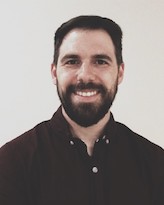 Presenter: Mark Smyth
Maintenance Software Specialist, COGEP Inc.
Description:
In the dynamic landscape of industrial operations, the synergy between maintenance, procurement, and inventory management plays a pivotal role in ensuring optimal equipment availability. This case study delves into the transformative journey of an operation that adopted automated analytic reports seamlessly connected to its CMMS system. These reports not only revolutionized the maintenance department’s approach but also fostered collaboration with the procurement and inventory group, resulting in significant improvements in equipment availability and operational efficiency.
Key highlights include the following:
1. Integrated Analytic Reports: exploring the adoption of automated analytic reports directly connected to the CMMS system, offering real-time insights into maintenance, procurement, and inventory data; and highlighting the interconnected nature of these reports, providing a holistic view of equipment status, maintenance activities, and parts availability.
2. Collaborative Approach: Showcasing the collaborative efforts between the maintenance and procurement teams facilitated by the integrated reports; and illustrating how shared insights fostered a unified strategy, enabling both teams to work together to reduce downtime and improve overall equipment availability.
3. Reducing Waiting Time for Parts: Discussing the specific strategies employed to reduce the time waiting for parts through data-driven decision-making; and presenting tangible outcomes and improvements in operational efficiency achieved by minimizing delays in the procurement and inventory processes.
4. Transition to Planned Maintenance: Highlighting the impact of integrated analytic reports on the maintenance team’s shift toward a more planned approach; and exploring how planned maintenance strategies were embraced and appreciated by the operations group, leading to smoother workflows and increased operational reliability.
5. Time Savings and Continuous Improvement: Demonstrating how the adoption of integrated analytic reports resulted in significant time savings for both maintenance and procurement teams; and showcasing how these time savings enabled teams to focus more on continuous improvement initiatives, driving long-term efficiency gains and operational excellence. About the Presenter:
With nearly 10 years of experience in the mining industry as a maintenance and reliability engineer, Mark Smyth discovered a severe lack of tools to make quick and informed business decisions. To increase operational efficiency and improve assets’ reliability, we need to measure ourselves through the use of insightful and meaningful KPIs. Unfortunately, many of us struggle to manipulate the data we have to generate these KPIs, or worse, the data simply isn’t available. As a passionate advocate for data-driven decision-making, Smyth has dedicated his career to bridging this gap and empowering mining asset professionals with the necessary tools and expertise to unlock the full potential of their operations. Through his extensive knowledge and proficiency in data analytics and software development, he has successfully developed innovative solutions that optimize maintenance strategies, reduce downtime, and enhance overall asset performance. |
Developing a Risk-based 10 year Budget for Water / Wastewater Assets Presenter: Jordan Gonda
Program Manager, The Regional Municipality of Niagara
Co-presenter:
John Murray Water and Wastewater Division, Niagara Region Description:
At Niagara Region, we manage a $5-billion asset portfolio of water and wastewater assets ranging from several water and wastewater treatment plants, to over 100 pumping stations and reservoirs, to networks of pipelines and sewers. Our assets provide water and wastewater services to half a million people throughout several communities.
This presentation will focus on the process to develop Niagara Region’s 2024 Financial Plan, which provides us with an investment forecast for the next 10 years. Using an intensive risk- based approach to project prioritization, the region shortlisted its investments through a project-by-project detailed analysis, which considered pre-investment risk vs the post-investment benefit and overall cost of the investment. Projects were then prioritized using a custom-built cost-benefit analytical framework that facilitates the trade-off between asset system service performance, cost, and risks.
Through this process, the region evaluated $2 billion of renewal and growth investment needs, and then shortlisted priorities—due to affordability constraints—into a total 10-year budget of $1.2 billion. About the Presenter:
Jordan Gonda, P.Eng., has nine years’ experience in engineering and asset management roles. He has previous experience in a consulting role, developing asset management programs for over 40 municipalities across Canada. Currently, he works for Niagara Region’s Water and Wastewater Utility’s capital planning team where he provides investment planning and decision-making support. He holds a Master’s in Civil Engineering from the University of Saskatchewan.  About the Co-presenter: John Murray is a Senior Asset Management Professional leading teams in the development and implementation of capital processes and budgets, asset management programs, plans, technology implementations, risk management, change management, financial planning and performance management. Currently the Manager of Capital Planning & Asset Management within Niagara Region's Water and Wastewater Division, has held past positions of General Manager Consulting Services in the Private sector as well as Head of Hamilton’s Asset Management Program. He is a founding member and past chair of CNAM (Canadian Network of Asset Management) and continues to facilitate a knowledge exchange and collaboration with other asset management public sector experts, throughout North America.
|
Integrity Operating Windows in the Digital Era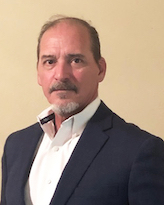 Presenter: Floyd Baker
Vice President, Antea Canada Inc
Description:
Integrity Operating Windows (IOWs) refer to predefined limits on damage mechanisms that can affect an asset’s performance. When operating variables exceed the limits defined in an IOW, it indicates that an asset might be approaching conditions that could lead to preventable damage and failure. Thus, IOWs—as per API 584—are an established recommended practice to ensure the integrity of complex industrial equipment, and to enhance maintenance strategies to be more proactive.
In today’s digital era, as technology evolves at warp speed thanks to IoT, the power and efficacy of IOWs are transforming. This presentation will discuss the importance of a holistic, unified platform for managing mechanical integrity, and how that helps inform real-time intelligence for the IOWs. Attendees will learn about the evolution of IOWs and how a digital platform with integrated data make it possible to receive instant notifications the moment a variable approaches the limits of the IOW. This makes it possible to address issues before they become a concern for asset failure, unplanned shutdown, or process safety.
Join Floyd Baker for an informative presentation exploring the evolution of IOW in the digital era—and best practices for achieving preventive maintenance at your own facilities. About the Presenter:
Floyd Baker is the Vice-president for Antea USA. With over 39 years of experience, Baker provides valuable insight and perspective on the digital assets and IIoT. He is an asset integrity and digital strategies advisor in global communities. |
City of Saint John Climate Change Action Plan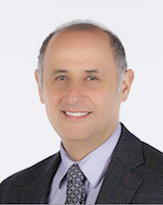 Presenter: Samir Yammine
Director of Asset Management and environmental Performance, City of Saint John
Description:
The City of Saint John has been an early adopter and a leader of climate change adaptation, mitigation practices, and asset management strategy. Over the past years, the city developed and implemented innovative strategies, plans, policies, programs, and measures to improve the efficiency and resiliency of its own facilities and infrastructure, as well as the community in general. This presentation will look at the current progress, results, and future plans of the city’s Climate Change Action Plan, which consists of the following three strategies:
A. Climate Change Mitigation Strategy:
a. Corporate Energy and GHG Action Plan
b. Community Energy and GHG Action Plan
B. Climate Change Adaptation Strategy
C. Asset Management Strategy.
The presentation will discuss how these strategies are integrated to meet the following objectives: ensure the city infrastructure and community are resilient to climate change impacts; provide optimal level of service to the public at the lowest lifecycle cost through the management of current and future assets in an effective, efficient, and sustainable manner; transition toward decarbonization pathway in an economic, environmentally, and socially sustainable manner; achieve the council objectives and goals of the Climate Change Action Plan; and secure external funding. About the Presenter:
Samir Yammine, P.Eng, is the Director of Asset Management and Environmental Performance for the City of Saint John, N.B. He received his Bachelor’s degree in Electrical Engineering and completed the two-year Master of Electrical Engineering coursework from Dalhousie University. His responsibilities include providing strategic leadership and direction to the Senior Leadership Team and Common Council in developing and implementing the Corporate Asset Management Program as well as the city community/corporate and climate change plans. The objective of these programs is to ensure the efficiency, effectiveness, and resiliency of the city’s infrastructure (estimated to be nearly $3.2 billion as of 2019) as well as setting priorities, strategies, policies, environmental initiatives, and approaches for capital investment and lifecycle management. Yammine has developed, implemented, and managed over 100 sustainable energy and climate change projects on new and existing city infrastructure, including the development and implementation of the City Climate Change Action Plan. These projects have won the City of Saint John many national and regional awards such as the Premier’s Awards for Energy Efficiency and FCM-CH2M HILL Sustainable Community Awards in the Energy Category presented by the Federation of Canadian Municipalities. |
The Role of AI and Machine Learning in Equipment Health Monitoring: Showcasing Real-world Applications Where AI and Machine Learning are Used for Proactive Equipment Maintenance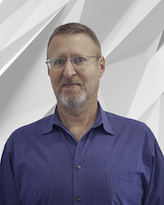 Presenter: Lance Rudolph
Director Digital and Innovation, ABB Inc.
Description:
Predictive maintenance has emerged as a transformative approach to equipment management, leveraging the power of machine learning to monitor and assess the health of critical machinery. Traditional maintenance strategies, such as preventive and reactive maintenance, often result in unnecessary downtime, increased operational costs, and inefficient resource allocation.
In this era of Industry 4.0, where data is a cornerstone of operational decision-making, the integration of machine learning into equipment health monitoring has become a game-changer. By analyzing vast amounts of sensor data, historical records, and external environmental factors, predictive models can identify patterns and anomalies indicative of impending equipment issues. This proactive approach not only minimizes downtime but also maximizes operational efficiency and extends the lifespan of machinery.
Join us to learn how to navigate this landscape, including some real-world applications and how to leverage AI and machine learning to predict equipment failures before they occur, enabling timely and cost-effective interventions. About the Presenter:
Lance Rudolph joined ABB over five years ago. As the Digital Innovation and Technology Director, Rudolph works with customers to bring business value from the ABB Advanced Services and Digital Solutions Portfolio. He previously held the role of general manager, advanced solutions, Americas, for Honeywell Process Solutions. In this role, he provided strategic leadership and operational excellence for the Advanced SW projects and Aftermarket Service business—driving commercial and technical excellence in project management, execution capability, and value creation for Honeywell customers. Rudolph started his career in South Africa in 1993 and has had roles in project engineering, project lead engineering, project management, engineering management, business development, and sales. Prior to relocating to Canada in 2008, he was the operations manager for Honeywell Process Solutions Africa with full ownership of Project Management and execution for both Projects & Automation Solutions and Advanced Solutions business Lines. He earned a B.Eng. in Electronic Engineering from Pretoria University in South Africa in 1992. |
Conquer Complex Projects: Mastering STOs, EPCM, and Beyond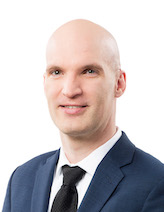 Presenter: Kurt Ersser
Managing Director, Kurser Inc
Description:
Embarking on a major project—whether industrial shutdowns, infrastructure upgrades, or even home renovations—brings inherent complexity and risk. This presentation equips you to navigate these challenges confidently, focusing on major maintenance, including STOs (shutdowns, turnarounds, outages) and, more broadly, EPCM (engineering, procurement, and construction management) projects across industries.
These undertakings represent significant financial commitments for investors—tens of millions to billions of dollars. They encompass critical infrastructure, new construction, or large-scale retrofits. But a common concern unites them: uncertainty. Will the event achieve its intended result, meet performance targets, and deliver the expected value? Is the schedule achievable to avoid delays impacting budgets? Are the projected costs within budget, as overruns can jeopardize the viability? Beyond these core uncertainties, additional challenges arise. Maintaining stakeholder confidence, alignment, and buy-in throughout the lifecycle is crucial. Financing requires a clear vision and demonstrated risk management ability. Mitigation strategies are critical for success. Attracting, retaining, and engaging teams of teams with expertise and fostering collaboration and performance are essential.
This presentation unveils proven approaches that transcend industry boundaries. Whether you’re managing a complex industrial STO or a large-scale residential renovation, the core principles remain the same. Discover industry-standard frameworks, methodologies, and practical tools for navigating complex undertakings effectively.
Learn actionable strategies for all levels. This presentation caters to a broad audience, spanning industries, from front-line workers to C-suite executives steering complex undertakings. Gain valuable insights from Kurt Ersser’s extensive experience across various industries and stakeholder groups. About the Presenter:
Kurt Ersser is a seasoned professional with over two decades of experience in physical asset-related initiatives worldwide. He has held key roles in original equipment manufacturer (OEM), owner-operator, and consultant capacities, specializing in service, engineering, project, program, and portfolio management, including STO and EPCM, typically in high-profile enterprise risk environments involving major capital investment. |
Bridging the Experience Gap to Achieve Excellence in Reliability so that Industry can Thrive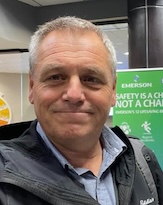 Presenter: Michael Bonga
Reliability Solution Manager, Atlantic Controls
Description:
Presentation Description:
1. Introduction of Atlantic Controls / Laurentide
2. A summary of asset management and reliability practices and technology of Atlantic Controls / Laurentide
3. An emphasis on the requirements for training to achieve reliability excellence
4. Atlantic Controls / Laurentide training and coaching focus
Throughout the presentation Mike will make references to his own experience in the field of reliability including:
1. Learning new techniques for vibration and motion analysis - It's all in The Waveform
2. Alignment and Balancing
3. Participation in the certification program with PEMAC and CMVA
4. The best way to achieve reliability
5. Holistic Reliability Software - AKA Spartakus
6. An opinion about the current state of Technology and why Mike still Likes CSI / Emerson after 33 years About the Presenter:
Michael Bonga is a professional engineer in New Brunswick with 35 years of experience in the field of mechanical reliability and machinery performance. Mike received his Mechanical Engineering degree from UNB in 1991. His career focus has always been complex reliability issues including machine specific performance improvement projects, reliability program development in factories, and plant energy performance improvement. Mike's favorite industrial machines are paper machines, turbines of any kind, mine hoists, and marine propulsion systems. Mike has been a power user of many machine health and assessment softwares, most notably CSI (Emerson) since 1991. His experience with machinery vibration includes over 30 years of participation in the CMVA and he is a former President. Mike is also passionate about nature and has advocated for land preservation and sustainable development of land in New Brunswick since childhood. Mike is the former President (now Emeritus) of the Nature Trust of New Brunswick and is continually active as a land steward for NTNB preserves. If you are interested and have any questions about land conversation, please feel free to talk to Mike. As an innovator, Mike has a strong imagination for exploring the Mechanical world. He has enjoyed many innovation projects including the development of wireless sensors and other vibration technologies, vibration and motion measurement methods on paper machines and other structures, and machinery software. Mike has also worked on machinery energy improvement projects including extensive work in hybrid & electric propulsion. As a sideline, Mike spends time experimenting with sailing technology - but so far there is no financial security in that path. To sum it up, Mike thrives on problem solving and improving on the status quo. |
Sustainability, Payback & Resilience: How Solar Energy could benefit your organization Presenter: Carl Duivenvoorden
Speaker / Writer / Sustainability Consultant, Self-Employed
Description:
The urgency of climate change demands that our world transition to non-emitting energy sources as quickly as possible. One of the leading technologies is solar photovoltaic.
But how does it work: what are the components; how does solar tie in to the larger grid; what is net-metering; what about reliability; and what’s the payback?
In this session, Carl Duivenvoorden will explain how solar systems work, and share his experience and data after four years of having a solar system at his home. About the Presenter:
Carl Duivenvoorden was raised on a dairy farm in northern New Brunswick. His diverse early agricultural career took him to over 25 countries. But from his early days in the village of Belledune, Duivenvoorden always had an uneasy concern about human impacts on our global environment. In 2006, he read "An Inconvenient Truth", the book that catapulted climate change onto the global agenda. In April 2007, he became one of the first Canadians to be personally trained by former U.S. Vice-p resident Al Gore to present live versions of his Academy Award-winning documentary. Since then, he’s worked as a speaker, writer, and sustainability consultant, helping people and organizations learn how they can save money, energy, and our environment. He has presented to over 450 audiences, and his column, Green Ideas, ran for 10 years in New Brunswick dailies. |
From Data to Dialogue: Using Asset Management to Communicate Infrastructure Challenges Presenter: Ian Tenhaaf
AIM Network Service Provider, R.A.M.P. Atlantic Ltd.
Description:
In this presentation, Ian Tenhaaf will explore the pivotal role of asset management in small communities using case studies from the Town of Annapolis Royal, N.S., and the Town of Rose Blanche, Nfld. These case studies will demonstrate how asset management can be leveraged as a powerful storytelling mechanism to communicate often overlooked infrastructure challenges to local communities, emphasizing their significance in the context of climate adaptation and the often-dull topic of utility reconstructions.
Small communities frequently face unique challenges in managing their infrastructure assets, from limited resources, to heightened vulnerability, to climate change impacts.
A key theme of the presentation will be the use of asset management to make infrastructure issues relatable and compelling. By framing these challenges through the lens of storytelling, we’ll look at how technical data and practical solutions can resonate more deeply with community members, stakeholders, and decision-makers. This approach helps to demystify the often complex and dry subject of infrastructure management, making it more accessible and relevant to those it impacts the most. Practitioners understand the crisis of our underfunded existing infrastructure, compounded by climate change and the dominant demand for development and new services.
Moreover, Tenhaaf will discuss the practitioner’s responsibility, highlighting the crucial role that engineers and asset managers play in safeguarding community well-being and adapting to climate change. Communicating these issues clearly is crucial as we navigate this uncertain future. By bridging the gap between technical expertise and human experience, Tenhaaf aims to reinforce the importance of asset management in building resilient and sustainable communities. About the Presenter:
Ian Tenhaaf is a professional civil engineer based in Dartmouth, N.S., with eight years of experience in asset management and stormwater management. In 2022, Tenhaaf became an independent consultant and joined the roster of AIM Network Service providers. He focuses on building capacity for asset management within small communities in Atlantic Canada and utilizing its systems and processes to develop practical approaches to climate adaptation. Tenhaaf’s commitment to fostering resilient and sustainable communities is reflected in his work and daily life. |
The Perfect Plant: Overcoming the Barriers to Leverage Modern Manufacturing Technology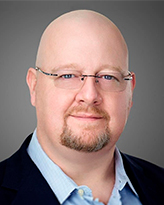 Presenter: Robert Hancock
Global Vice President of Sales, Sigga Technologies
Description:
The “Perfect Plant” is something that everyone is working towards. Technology generally exists to support this model today. If that is the case, then, what is keeping this from becoming the new reality? It all starts with data. The issue, however, is that the typical SAP Plant Maintenance environment does not have the quality of data required in order to truly leverage IOT, Automation, and other tools that may lead to making good decisions and taking predictive action. Practically speaking there are barriers to achieving the “Perfect Plant” and these barriers can be viewed as evolutionary steps and begin with one thing: The elimination of paper (and other data gaps that are an extension of this). This, then extends into concepts of data integrity. The concept of having reliable and accurate data that can be leveraged by automated systems. This data integrity and elimination of paper require the same input: The “well” connected worker. About the Presenter:
Robert has served in the enterprise asset management space for the last 15 years and currently serves as the Global VP of Sales for Sigga, a provider of EAM add on solutions for SAP Plant Maintenance such as Planning and Scheduling and a no code mobile work order maintenance execution solution. Robert previously served as an executive with Prometheus Group, IFS, and Service Power and has consulted with customers all over the globe in helping organizations pursue their digital journey towards maintenance excellence. |
ISO 55000 series – What’s New and What has Changed in 2024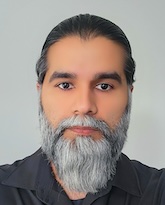 Presenter: Salman Zafar
Senior Project Manager, Asset Management, Regional Municipality of Halton
Description:
ISO’s asset management technical committee has recently released six new and updated standards in the ISO 55000 series. New standards cover public policy, people, and data; revised standards include ISO 55000 (principles), ISO 55010 (finance) and most importantly ISO 55001 (requirements). This session will provide an overview of what to expect from these new standards, and how the new ISO 55001 compares to its 2014 predecessor. About the Presenter:
Sal Zafar brings with him over 10+ years of experience in development and implementation of municipal asset management systems and in delivering capacity building programs. Since 2018, Sal is serving as a subject matter expert on the Canadian Mirror Committee to ISO’s Technical Committee on Asset Management (AM) responsible for developing and updating the ISO 55000 family of standards. Sal is currently the Senior Project Manager, AM at Halton Region where he is leading several key initiatives such as delivering the 2025 AM plan update, rolling out a standardized asset criticality framework, and implementing a decision support system. Before Halton, Sal was part of District Municipality of Muskoka’s AM success story as where he demonstrated leadership in building internal staff capacity to adopt best practices in AM and implemented a structured and standardized framework for capturing service levels and risk assessment across the organization. Sal has also worked closely with municipal associations for 8+ years to deliver research projects on current state of AM practice in Ontario, supported annual review of 400+ municipal AM plans to identify gaps and design capacity building initiatives, and led a joint initiative between AMO and FCM in collaboration with AMONTario to provide AM technical assistance to multidisciplinary staff and elected officials in 80+ Ontario municipalities. |
IDMS Use Case for Run and Maintain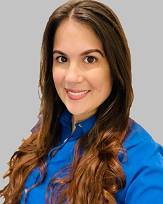 Presenter: Angela Saldivar
AIM & RBI Specialist, Antea Canada Inc
Description:
In today’s digital world, where efficiency and data-driven decision-making are increasingly important, the role of an inspection data management system (IDMS) has become critical for operators in asset-intensive industries. IDMS helps eliminate information silos, integrate data sources, and create a single version of the truth to help operators make data-driven decisions in maintenance and reliability planning. But what are the practical use cases for IDMS? How is it used in typical workflows for maintenance and repair?
This presentation will aim to answer those questions by examining the practical applications of an IDMS within maintenance and repair workflows. Attendees will learn the specific use cases for an IDMS in each stage of a typical workflow, how it works in tandem with other processes, and the benefits of implementing it. It will provide a detailed overview of how IDMS enhances operational efficiency by streamlining data collection, analysis and reporting processes. Attendees will gain insights into integrating IDMS with existing enterprise systems, ensuring seamless data flow and real-time updates.
Featuring data from real use cases and examples from actual workflows, attendees will learn how to leverage IDMS to optimize inspection schedules, improve risk based inspection (strategies), and enhance maintenance workflows and processes. By the end of the presentation, attendees will be equipped with actionable knowledge to implement and maximize the benefits of IDMS in their own mechanical integrity programs. About the Presenter:
Angela Saldivar is an AIM and RBI specialist with over 10 years’ industry experience helping owner/operators achieve excellence in compliance and reliability. She has worked with several inspection and engineering companies such as Mistras, Team Industrial, and Equity Engineering, and is currently the AIM/RBI Specialist for Antea. Saldivar has also worked as an owner/user with Mitsubishi Chemical America as an asset integrity specialist.  |
Imperfect Data Sources for Reliability Engineering Presenter: Ryan Fairbrother
Director, Potash Maintenance and Reliability, Nutrien
Description:
Asset decision-making is often performed based on the opinions of stakeholders. Some of these stakeholders may be highly influential and considered subject matter experts—and they may be wrong. Data, therefore, is essential to corroborate or refute the stakeholder narrative.
Data sources for reliability engineering are often imperfect. Great manual effort is often required to validate data in order to draw meaningful conclusions and drive correct decisions. Without this data, wrong decisions will be made on reliability engineering efforts, capital investment, and so forth. If the data is messy, many will decline to trust it. Accurate reliability data is essential to understand total cost of ownership and prioritize resources to best effect.
This presentation will discuss some tactics and processes for validating reliability data sources such as lost production and asset costs, while also decreasing the sources of error to this data. In order to reduce error in the data sources, people change management is often required. People need to understand the value of the data to themselves and to the business as part of the change management process. The most compelling demonstration of data value is to accurately diagnose the greatest causes of downtime, cost, or quality, and then attack these with continuous improvement tools. And so, reliability data accuracy and asset continuous improvement form a virtuous circle.
Ownership and involvement with accurate reliability information can help a squeaky-wheel stakeholder or an experienced subject matter expert be a powerful advocate for correct asset decisions. About the Presenter:
Ryan Fairbrother is the Director of Maintenance and Reliability for Nutrien Potash, supporting the six Nutrien potash mines in Saskatchewan. Throughout his 19 years with Nutrien, Fairbrother has constructed and maintained assets from the borer end of the mine through the hoisting systems and out the back end of the mill. He is passionate about reliability engineering and continuous improvement. |
SLSMC Asset Management ISO 55000 Journey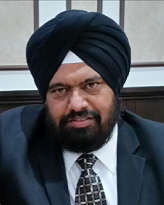 Presenter: Iqbal Biln
Manager, Corporate Technical Programs, St. Lawrence Seaway Management Corp.
Description:
Managing seaway assets in a sustainable manner requires an asset management system.
Traditional maintenance, reliability, and engineering practices in silos are not good enough. We need a management system that will go beyond just great maintenance, great reliability, and great engineering. We need a management system that will bring the operations and maintenance pieces together with the infrastructure, finance, IT, and HR pieces. We need a management system with an overarching framework and governance structure that will support value-based investment decisions. We need a management system that will allow the St. Lawrence Seaway Management Corp. (SLSMC) to maximize value from its assets and infrastructure for sustainable seaway service delivery. Finally, we need to build a culture that will sustain our effort over many years.
As an organization, we have been doing asset management for years and have been adopting and implementing good industry practices. However, to maintain best-in-class asset management practices and to evolve within the industry, we are committed to aligning with ISO 55001.
This presentation will outline the approach SLSMC has adopted known as the Asset Management Eco-System (AMES). This is a comprehensive system that aims to manage assets in a holistic way by encompassing all the functional groups of the organization. About the Presenter:
Iqbal Singh Biln is the Corporate Manager for Technical Programs at the St. Lawrence Seaway Management Corp. He is an engineering professional with 30 years of multidisciplinary experience in asset management, engineering, infrastructure management, maintenance, and operations in the mining and marine industries. He has managed large multi-scale projects, including preparation of business cases, investment justification, budget management, risk analysis, equipment selection, procurement, and construction management. Biln has also developed and implemented infrastructure inspection and assessment programs, preventative maintenance programs, business plans, and long-term asset renewal programs. As a Six Sigma Champion, Biln is committed to excellence through continuous improvement. He holds a B.Eng. and an MBA, and is a registered professional engineer in Ontario. He also is a Certified Asset Management Assessor and a Certified Maintenance Management Professional. |
Net Zero Through Reliability Presenter: Yoann Urruty
Director of Technologies, Spartakus Technologies
Description:
Economic growth combined with massive retirement of labour and an unprecedented pandemic in 2020 led to shortage of manpower in many employment fields. In addition to global market being even more competitive (reinforcement of Middle Eastern or Asian manufacturing, low interest rates policies, digitalization, etc.), companies now face the need to do more with less like never before.
At the same time, with energy return on investment of fossil fuels decreasing drastically (extracting one barrel of crude in 2020 requires five to 10 times more energy than in the 1950s), we may be entering an era of economic recession (or even degrowth?) with political uncertainties and social turbulences that will have an irreversible effect on the world as we know it.
In this session, we will propose a vision for the manufacturing organizations of the years 2025 to 2050 that aims toward resilience.
We’ll focus on what to expect regarding the generational gap between new recruits and older workers, especially in a post-pandemic era: our old habits for training, coaching, and managing younger employees have drastically changed and now need to be approached differently.
We’ll also emphasize the necessity of having the right foundation for a reliability program (design, install, operate, and maintain) that will enable the paradigm shift required to become not only a productive, effective manufacturing company, but a resilient one. About the Presenter:
Yoann Urruty, Eng., CMRP, is a Reliability Engineering Supervisor at Spartakus Technologies with 10 years’ experience as a lubrication technician, oil analyst, reliability consultant, and technical trainer. He has worked with maintenance people in dozens of industrial facilities in North America to establish criticality ranking on their assets, develop/optimize and implement PM programs, participate in RCA activities, and optimize inventories. Urruty is also the creator of Spartakus APM®, a pleasant and light asset health cloud monitoring solution for reliability practitioners. |
Using Best Practices Corrosion Management to Ensure the Service Life of a Potash Mine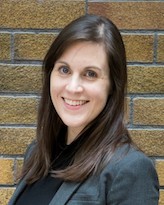 Presenter: Zoe Coull
CEO, ICE Dragon Corrosion
Co-presenter:
Muan Wei Director of Operations Description:
Corrosion is a widely known asset defect across many industries. It directly introduces organizational risk by negatively impacting asset integrity and thus reducing asset service life, increasing maintenance costs, undermining safety, and creating unplanned outages. Within the potash mining industry specifically, corrosion is significant due to the nature of the commodity and the processing conditions. In the past, corrosion failures have been associated with catastrophic and deadly equipment failures. However, it’s not something asset owners need to simply “live with.”
This presentation will introduce a best practice corrosion management program (CMP) framework, which was developed in line with familiar asset management standards (e.g., ISO 55000). These best practices were taken from other industries (notably oil & gas) and adapted for the mining sector and applied to the design of a Saskatchewan potash mine. This approach was novel in the sector and was used to proactively and systemically reduce corrosion risks for the project, enhance asset integrity planning, and create long-term benefits for the operations team.
The objectives of the presentation are to share the key components of the framework used, describe the benefits, and underscore the importance of ensuring corrosion considerations early in project design. It will describe the practical actions that were taken in the engineering design to identify and reduce corrosion risk and discuss how these learnings were then taken into the operational readiness development for the plant by embedding knowledge and best practices into the asset integrity management program. About the Presenter:
As a professional engineer, Zoë Coull spent her early career working on becoming a technical expert in her specialized field. She completed her Bachelor’s degree in Materials Science and Engineering at Imperial College, a Master’s in Corrosion Engineering at the University of Manchester, and a Ph.D. from the University of Toronto. This rigorous education drives her thesis-based, thoughtful, and hard-work approach to her career and has given her the confidence to tackle all kinds of challenges. About the Co-presenter: Syed Ali Debaj Jaffry
Job title: Discipline Lead – Civil/Structural/Architectural
Company: BHP
Amit S. Aulakh, M.Sc., P.Eng.
Job title: Consultant
Company: Independent Consultant
Name: Muan Wei
Job title: Director of Operations
Company:ICE Dragon Corrosion Inc
|
Cross-Pollinating Climate Change Action with Maintenance Management Planning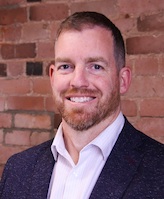 Presenter: Mark Buma
Manager of Facilities Operations, City of Orillia
Description:
Small municipalities often struggle with resourcing asset management and maintenance management programs. What are the data gaps? Which of the numerous platforms is the best fit for the subject municipality? Is there an established Climate Change Action Plan that speaks to greenhouse gas (GHG) reduction targets? What is the state of the maintenance management/work order system (CMMS)?
This case study is a culmination of one municipality’s efforts to simultaneously implement an asset management program and a CMMS, while delivering on a commitment to reduce corporate GHG emissions.
Cross-pollinating building condition assessments and GHG facility audits results in a long-term asset and maintenance management strategy that ensures facilities are maintained to a high standard, supporting the implementation of the city’s Climate Change Action Plan. About the Presenter:
Mark Buma has worked within the public sector for 19 years in various capacities, including facility maintenance, GIS, sustainability, and capital project planning and management. Additionally, Buma worked part-time at Niagara College for 11 years as in instructor in the GIS and Environmental programs. In his current role with the City of Orillia, Buma oversees facility operations for 51 buildings that range from designated heritage buildings to state-of-the-art recreation facilities. He was integral in the development of the city’s Climate Change Action Plan and led its implementation until 2023 when he began to lead the facilities team. Through the past year, Buma has been able to culminate his diverse experience into the development of asset management and maintenance management strategies for the city while continuing to deliver on commitments established in the Climate Change Action Plan. |
Shutdown, Turnaround & Outage (STO) Training & Certification Survey Results and Status Update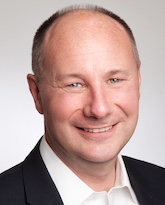 Presenter: Ron Bettin
President & Principal Consultant, Adduco Consulting
Co-presenter:
Frank Engli Regional Group Lead – Canada for Becht’s Reliability, Maintenance, Turnarounds and Capital Projects Group Description:
This session will include the PEMAC STO (shutdown, turnaround, outages) survey results and Update; a panel discussion of STO subject matter experts; and an opportunity for attendee input. In Q1 of 2024, PEMAC surveyed its members for input on the potential development of an STO Management Training & Certification Program. This session will share an overview of the findings and status update, including alignment with PEMAC’s vision and mission; extent and scale of STO events in the industry sectors represented by PEMAC members; current landscape of STO management training and certification; industry needs and requirements for STO management training and certification; PEMAC STO Management Training & Certification cost-benefit assessment; and the status of PEMAC’s STO Management Training & Certification initiative. The panel discussion will consider the following: How do the STO survey findings reflect the requirements for STO in your industry sector? How would effective STO management training provide value to your industry sector? What do you feel are the most important training requirements for STO management? If PEMAC developed an STO Management Training & Certification Program, what could be done to make this successful? About the Presenter:
Ron Bettin is a respected industry executive and business leader. With a vibrant entrepreneurial spirit, he is the co-founder of several companies, including two energy companies. Cross-functional business and technology understanding gives Bettin a unique perspective to help companies grow and transform. As a leader, Bettin provides strategic business and project management skills to fill leadership gaps from small start-ups to large organizations. He is a graduate of Queen’s University Executive MBA, SAIT’s Industrial Engineering Technology (Operations Management), and a Second-Class Power Engineer. He has studied at the China Europe International Business School in Shanghai and is a Prosci® Certified Change Practitioner. Earlier in his career, he was actively involved with PEMAC, helping to establish the Alberta Chapter and proactively encouraging those he worked with to engage in the MMP program. He was the 2007 winner of the PEMAC Sergio Guy Memorial Award and continues to offer support by maintaining his PEMAC membership. 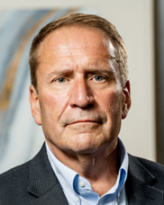 About the Co-presenter: Frank Engli, P.Eng., is the Regional Group Lead – Canada for Becht’s Reliability, Maintenance, Turnarounds, and Capital Projects Group and resides in Edmonton, Alta.
Engli has over 40 years of experience working in operation settings at six different sites across Canada on project, maintenance, HSSE and turnaround management, and continuous improvement processes in the energy, refinery, and petrochemical industry. He has extensive expertise in solving site problems and a proven track record to implement change and create sustaining management programs and processes, including improved business controls, practices, and contracts management.
Engli has also built a strong network across North America with external clients, competitors, contractors, and building trades and is a sought-after speaker at Canadian and international turnaround and maintenance conferences, webinars, and podcasts. Engli has engineering and business degrees: BASc. (Windsor), M.Eng. (Toronto), and MBA (Saint Mary’s), and he is a certified Six Sigma Black Belt practitioner. He is a licensed engineer in the provinces of Alberta and Ontario.
He is a global specialty consulting provider in the energy industry, focused on helping clients succeed. Engli engages world-class experts in providing multidisciplinary solutions in engineering and plant services.
|
Efficiency Derailment: "Consequences of Work Management Failures"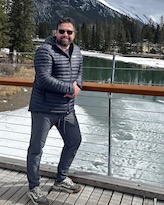 Presenter: Joseph Peterson
Maintenace Planner / Scheduler - Maintenance Supervisor, Parsons Corporation
Description:
Efficiency Derailment: Consequences of Work Management Failures
Presenter: Joe Peterson
Modern day business is fast-paced and often a in a state of flux, efficient work management is crucial for achieving organizational goals and maintaining competitive advantage. However, misfired work management processes can lead to significant setbacks, disrupting productivity and diminishing morale. My presentation, titled "Efficiency Derailment: Consequences of Work Management Failures" delves into the common pitfalls that derail work efficiency and explores how the IPSECA framework (Identify, Plan, Schedule, Execute, Close, Analyze) can mitigate these challenges if organizations use the framework end to end.
Mismanagement often stems from inadequate planning, poor communication, and ineffective control mechanisms. These issues result in missed deadlines, budget overruns, and subpar project outcomes. By examining two real Canadian based scenarios we will look to identify the root causes to provide a comprehensive understanding of where and why work management processes go awry.
IPSECA offers a structured approach to streamline project management and enhance overall efficiency. The framework's first step, Identify, focuses on clarifying project goals and necessary resources. Plan involves developing a detailed strategy to achieve these goals. Schedule ensures tasks are timely organized, while Execute emphasizes the importance of coordination and resource availability. Control/Close involves monitoring progress and managing deviations from the plan. Finally, Analyze provides insights into project performance, facilitating continuous improvement.
By integrating IPSECA into work management practices, organizations can preemptively address potential issues, ensuring smoother project execution and more reliable outcomes. This presentation will look to highlight the potential of IPSECA, demonstrating how its adoption can turn misfired management into strategic success. Attendees will either gain or be reminded of actionable insights and practical tools to enhance their project management capabilities, ultimately driving their organizations towards sustained efficiency and success. About the Presenter:
Previous to being in the trades, I spent 10 years in the Military. Looking for a new career I revisited my love for creating things with my hands. I ended up in an apprenticeship in an oil and gas plant in Northern Alberta. From 2006 to present I found myself in either the oil and gas or mining industries. Eventually rising to a supervisory role and having to deal with frustration from the maintenance teams I worked for I decided to become educated in maintenance management as I decided to transition to a Maintenance Planner capacity. This has now led to me pursuing my CAMP designation which I am currently attending. |
Are you a barrier to improvement? Presenter: James Reyes-Picknell
Managing Consultant, Conscious Asset
Description:
Making improvements "stick" in maintenance and reliability has always been challenging. Even with exceptional business cases, and demand from the shop floor, changes meet with resistance, often at the middle management levels - superintendents and managers. Even when dedicated to doing their best for their companies, people can unwittingly become barriers to change. Once they realize what they are doing, or not, they often open up to the changes and become supportive, but their biggest hurdle is often to admitting to themselves that they have been a part of the problem. Behind all this is one simple concept - we don't know what we don't know. This presentation is based on nearly 30 years of helping companies make improvements. It will describe several of the various forms of resistance that are encountered and why. Knowing that, we can reflect on ourselves and perhaps begin to see ways in which we can become more effective. About the Presenter:
James Reyes-Picknell is an MMP instructor, PEMAC volunteer, and former board member. He is Founder and President of Conscious Asset, and author of the bestseller Uptime—Strategies for Excellence in Maintenance Management, several other books, and numerous magazine articles. His latest publication in April 2017, co-authored with Jesus Sifonte, is destined to change the RCM world for the better while showing how RCM is an integral aspect of asset management. Reyes-Picknell is a professional engineer, certified management consultant, and a thought leader in the fields of maintenance and asset reliability. He works with clients in asset-intensive industries such as resource extraction and processing, utilities, transportation, and manufacturing, where high reliability is a key to business success. |
Persona-based value across the asset lifecycle - The battle of Fiefdom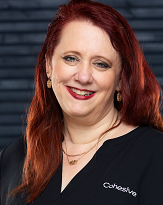 Presenter: Melissa Ruth
Senior Manager, Advisory Services, Cohesive
Description:
Whether we realize it or not, the concept of Fiefdom plays a role throughout our organizations in crazy ways. What works for one site may not work fully at another site. Likewise, what works for one department may not fully address the needs of another and so on. Worse, if not managed correctly, these smaller domains and their belief that their ways of working are the "right" ways will often derail your plans in asset management and asset lifecycle planning. We will discuss the following practical activities to address these Fiefdom challenges directly:
Defining Personas: Identifying key stakeholder personas and understanding their unique needs and challenges.
Lifecycle Stages: Examining how persona-based value varies across different stages of the asset lifecycle.
Overcoming Silos: Strategies for breaking down ‘fiefdoms’ within organizations to enhance collaboration and value creation.
Best Practices: Real-world examples of successful persona-based approaches in asset management.
Future Directions: Predicting how persona-based strategies will evolve and continue to shape the asset management landscape About the Presenter:
As senior managing consultant of advisory services in Cohesive, Melissa Ruth has more than 20 years of experience as a technology consultant and strategist in the software industry. Ruth utilizes her MBA, certified effective facilitator, and certified reliability leader certifications with finesse, assisting each customer toward the goal of finding those quick wins and long-term gains while ensuring both processes and systems work better together. While her career has been focused primarily on configuration management as it applies to facility, asset, and document management, it is her passion to help teams work better together that gets her the results her customers need. She has spent her career leveraging effective change management and advanced problem-solving skills in a way that provides a great customer experience. |
The Implementation of a Corrosion Management Program (CMP) in an Operating Gold Mine Presenter: Muan Wei
Director of Operations, ICE Dragon Corrosion
Co-presenter:
Michel Morissette Asset Management Superintendent Description:
Corrosion poses significant challenges to asset integrity for asset-dependent business, impacting costs, health and safety, environmental sustainability, community relations, and stewardship. Effective corrosion management is crucial for mitigating losses, extending asset lifespans, and avoiding catastrophic failures.
A Corrosion Management Program (CMP) provides a structured framework for identifying, assessing, and mitigating corrosion risks within an organization. It encompasses policies, processes, and procedures aimed at proactive risk management and continuous improvement. Crucially, the CMP aligns synergistically with an organization's strategic asset management plan, enhancing overall asset management objectives and strategies.
Successful CMP implementation hinges on collaboration not only within the organization but also with external stakeholders, including suppliers and contractors. This collaborative approach ensures diverse perspectives are considered, and resources are optimized to effectively address corrosion challenges.
This presentation showcases a CMP framework which is developed in line with asset management and risk management standards. Drawing insights from the implementation within an operational gold mine, the presentation highlights invaluable lessons learned, encountered obstacles, and innovative strategies employed to overcome challenges. Furthermore, it identifies tangible benefits realized at both strategic and tactical levels following CMP implementation.
In addition, the structured approach to addressing technical corrosion risks is illustrated through case studies, emphasizing pivotal role of asset health monitoring and data-driven decision-making in optimizing asset management practices.
About the Presenter:
Muan Wei PEng, M.ASc, Corrosion Specialist, Director of Operations 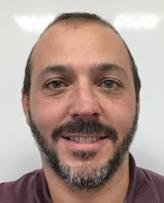 |
Asset Acquisition: Balancing Project Delivery and Asset Management Priorities for Success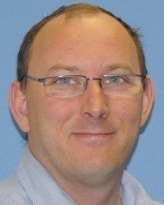 Presenter: Christopher Biel
Principal Consultant, PPAIP Consulting
Description:
As asset managers, we focus on the lifecycle of our asset, which is dominated by the operate and maintain phase. Project managers focus on the safe, timely delivery of a project. In today’s business environment, these goals should align during the asset acquisition phase, but unfortunately often conflict in practice.
How we acquire, renew, or expand our assets is most often driven by short-term and capital project management frameworks with limited influence from asset management thinking, resulting in the loss of significant value to the business and often causing conflict between project management and asset management professionals.
This presentation will use the lens of “operational readiness” and case studies from recent projects combined with the learnings from the development of an operational readiness standard for a number of mining and industrial clients to educate asset managers, maintenance and operations teams, and project managers in the following:
What is operations readiness and its benefits to the business?
How do we integrate our asset management needs into the project lifecycle?
How can we improve the alignment and communication between the project team and the operating business? About the Presenter:
Biel started his career in maintenance and has participated in the maturing of asset management thinking in the mining, manufacturing, and infrastructure industries. He holds an asset management professional certification, trades qualifications, a degree in mechanical engineering, and a range of general management certifications. In industry, he has held a variety of line, leadership, and corporate positions, spanning maintenance, operations, asset management, engineering, and capital projects. Since moving to consulting 15 years ago, Biel held parallel positions as the global lead for operational readiness and the North American regional director for asset management and operational performance in a major engineering and project management company. He has worked on asset start-ups, sustained operations, and focused improvements in Australia, Asia, Africa, South America, U.S., and Canada. Based in Toronto, he is now the Principal Consultant of PPAIP Consulting, specializing in assisting clients to improve asset management and the performance of their assets and projects. |
Advancing Predictive Maintenance: AI-Based Solutions for Complex Machinery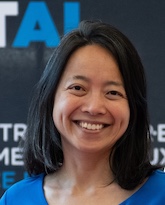 Presenter: Yun Yao
president, Soralink
Description:
Predictive maintenance has posed significant challenges for the past three decades, particularly in handling machinery with variable speeds and diverse usage cycles. Traditional methods often fall short when adapting to the unique demands of such equipment, necessitating a more flexible and intelligent approach. Our solution leverages an AI-based analysis framework designed to address these complexities effectively, particularly in environments with stringent operational requirements.
This presentation will explore four distinct use cases within the food processing and pharmaceutical industries, demonstrating how our adaptive, AI-driven methodology offers substantial improvements over conventional predictive maintenance techniques. Each case study highlights a scenario where our technology has successfully anticipated equipment failures, allowing for timely interventions that mitigate downtime and enhance operational efficiency.
1. Burnt Bearing Detection in Boiler Fans (food processing): We’ll discuss how our system detects early signs of bearing failures in high-temperature environments, preventing catastrophic failures in critical boiler fan operations.
2. Belt Drive Malfunctions (food processing): Our AI framework identifies inefficiencies and emerging issues in belt-driven systems, enabling pre-emptive maintenance that ensures continuous production without unscheduled stops.
3. Integrating Weather Indicators for Temperature Tracking: This case examines the integration of external weather data with internal temperature readings to predict potential system overloads, enhancing the responsiveness of maintenance protocols.
4. Linear Motor Monitoring (pharmaceuticals): Focused on the high-stakes pharmaceutical sector, we will demonstrate rapid response capabilities in monitoring linear motors, crucial for maintaining the integrity of delicate production processes.
Through these use cases, our presentation will illustrate the effectiveness of AI in transforming predictive maintenance from a reactive to a proactive strategy, emphasizing improved reliability, reduced costs, and enhanced safety across various industrial sectors. About the Presenter:
Dr. Yun Yao has a Ph.D. in Electrical Engineering from McGill University and is the president of Soralink, a dynamic and innovative company focused on addressing the challenges of predictive maintenance using AI and IoT. Utilizing the latest advancements in AI, wireless, and embedded computing, Soralink offers solutions that enhance predictive maintenance practices and increase operational efficiency. |
Case Study: Implementing Working Menu for the Maintenance Team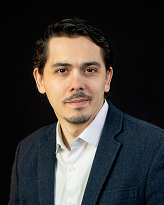 Presenter: Alp Bora
Maintenance Director, ACPE Inc.
Description:
This presentation will look at a case study of a mine that had a management change. Alp Bora will discuss how he coached this new maintenance superintendent and his team to become a high-performing team.
We defined what a proactive maintenance team looks like and then defined the expectations from the superintendent and supervisors, and built a working menu.
This work was focused more on the soft skills rather than the hard skills.
The presentation will present three pillars of high-performing maintenance teams: systems, processes, and behaviours. We touched on all these three pillars, but made sure that the expectations around behaviours were well communicated and understood.
This presentation will interest maintenance and operations management teams. About the Presenter:
Alp Bora is the Head of Innovation at Alp Bora & Co., an independent think tank and consulting firm providing advisory, speaking, and coaching services in the areas of mining & metals, business strategy, and leadership. The mission is to help mining & metallurgy companies achieve operational excellence and support the mining industry’s transition to a sustainable future. Bora’s expertise includes project management, operational excellence, and asset management. À propos du présentateur : Alp est le responsable de l'innovation chez Alp Bora & Co., un groupe de réflexion indépendant et un cabinet de conseil fournissant des services de conseil, de conférences et de coaching dans les domaines suivants : Mines et métaux, Stratégie d'entreprise et Leadership. Sa mission est d'aider les entreprises minières et métallurgiques à atteindre l'excellence opérationnelle et à soutenir la transition de l'industrie minière vers un avenir durable. Les domaines d'expertise d'Alp comprennent la gestion de projet, l'excellence opérationnelle et la gestion des actifs. |
Two Things to Improve Reliability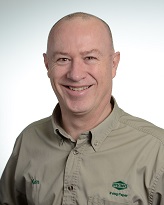 Presenter: Kenneth Squires
Reliability Team Leader, Irving Paper Limited
Description:
This presentation will review two very important things to control in your plant to improve reliability and how they manifest themselves in the reliability of your rotating equipment assets.
Case histories and a reality check on what is doable in the field (vs the sales pitch sometimes given) will illustrate how they tie back together to equipment reliability. The design engineering of your equipment happens away from your plant and sometimes it happened a long time ago. Assumptions must be made to actual field conditions in order to complete the design process. This leaves room for the user to adjust to the actual field conditions. It is more than just two things, but if you keep these two things in mind all the time as you make the necessary improvements to your maintenance and operational processes, your reliability will improve.
These are observations based on experience and knowledge gained through Kenneth Squires’ many years involved in maintenance and reliability in the pulp & paper industry as a technician and as a supervisor. About the Presenter:
Ken Squires has over 35 years’ experience working in the maintenance field as an Industrial Mechanic, Machinist, Welder, and Power Engineer. He is also an ISO Category III vibration analyst with over 20 years vibration experience in the paper making industry. He is a certified six-sigma green belt holder and is certified as a Level II Lubrication technician. Current employment held is the position of Reliability Team Leader at Irving Paper whose responsibility includes managing, supervising, and mentoring Vibration Analysts, Lubrication Technicians and Hydraulic technicians in the mill. |
No Value from AI-Predictive Maintenance? Maintenance Strategy is the Culprit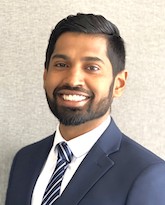 Presenter: Arun Gowtham
Senior Advisor, Asset Management, GHD Inc.
Description:
Organizations are rapidly implementing new digital tools for remote monitoring of assets and using them to drive maintenance actions. However, not all projects succeed in creating value for the teams. Where is the shortcoming? Is the technology broken, or are we all falling for the marketing ploy? The answer is complicated. It has to do with each company’s maintenance strategy for adopting digital tools. The choice of tools such as IIoT, CBM, and AI has to be blended with the business strategy. This presentation will cover the ideas and principles to successfully execute AI-PdM in your organization. It will open your mind to see that there are other supporting processes that need to be built into place to extract value from PdM. Gathered from multiple industries, the ideas are packaged into an abstract form that any member can apply in their manufacturing plant. About the Presenter:
Arun Gowtham is a Certified Reliability Engineer with a decade of industry experience applying Reliability Centered Maintenance (RCM) and Design for Reliability practices to improve system reliability. His breadth of exposure to diverse teams spanning three countries and four industries has given him unique insights and opportunities to tackle field failures and build sustaining reliability programs. His current interest is in employing data-driven analytics to underpin decision-making for reliability management. Gowtham started his reliability journey with a thesis on Predictive Modelling for RCM as part of his Master’s degree from Drexel University in Pennsylvania.. He also holds a Bachelor’s degree in Mechanical Engineering from Anna University in India. Gowtham is an active volunteer, the president of PEMAC’s GTA Chapter, and a registered engineer in Ontario. |
Maintenance STOs: Integrating Project Work into STOs: The Project Team Might Not Be the Villain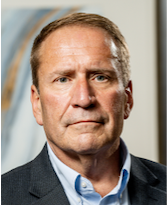 Presenter: Frank Engli
Senior Advisor, Becht
Description:
Maintenance STO (shutdown, turnaround, outages) events involve major expenditures of time and money for any large continuous process plant. Without careful planning and preparation, they can quickly and easily overrun their target cost and schedule. STO events with a high proportion of capital work are particularly at risk of overrun.
Every STO manager knows that if there is capital work to be executed in the STO, that spells trouble for the predictability of the event schedule and cost targets. And most STO managers, when asked why, will state that it’s the fault of the project managers. But is it really that simple? Often the project manager is given a “poisoned chalice,” asked to implement a project within an impossibly short timescale.
This presentation will show that the project manager needs to know, before the project budget is finalized, how the project will integrate into the event, and how to approach the integration of project work into an STO event in order to maximize the chances of success and minimize the risk of failure. It will look at setting up the project with a realistic timescale; discuss what should be in an integration plan and why the project manager needs to know it before the STO manager; and discuss how the STO manager can improve the visibility of project progress reporting for STO readiness. About the Presenter:
Frank Engli, P.Eng., is the Regional Group Lead – Canada for Becht’s Reliability, Maintenance, Turnarounds, and Capital Projects Group and resides in Edmonton, Alta. |
Using Vibration Condition Monitoring to Identify Repeat Equipment Failures and How Advanced Vibration Analysis Methods Can Identify Solutions for Reliability Improvement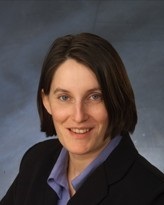 Presenter: Dora Orchard
Senior Reliability Engineer, Acuren Group
Description:
This presentation will explore how condition monitoring data (specifically from vibration analysis) can be used to flag and identify repeat equipment failures (“bad actors”) for reliability improvements, and how, in many situations, advanced vibration analysis can be used to identify and assist with developing solutions to avoid these failures.
Presenting examples of condition monitoring programs where repeat equipment failures were noted, Dora Orchard will explain that proper selection of advanced diagnostic techniques allowed further diagnosis of conditions that led to these failures and provided guidance toward cost-effective and workable solutions.
Vibration condition monitoring is an essential tool in plant maintenance management and operational reliability. Plant vibration data can also provide guidance toward advanced vibration analysis that can definitively identify sources of the chronic failures when other methods do not. Examples presented from various industries will include pumps and motors, rotors, gearboxes, and the structures that support them. This session will also include actual data and follow-up results confirming success. About the Presenter:
Dora Orchard is a Senior Reliability Engineer with Acuren and has over 20 years of reliability engineering experience supporting maintenance, reliability, and operations in a variety of industrial sectors, including pulp & paper, mineral processing, manufacturing, energy, transportation, and defence. Since joining the company in 2001, she has been involved in numerous vibration monitoring and analysis projects for clients in these and other industries. Her specific responsibilities and projects have included reliability program development and assessment, and asset criticality assessment, as well as directing and performing advanced equipment vibration diagnostics and troubleshooting. This includes development and implementation of corrective action plans, including vibration control and dynamic balancing, as well as other condition monitoring technologies. Working closely with the Acuren team, she has participated in the development and delivery of various specialized techniques, including IN-SITU™ Roll Balancing and SCORE™ Maintenance Assessment. Orchard’s knowledge base allows her to deliver holistic asset management solutions that help ensure asset management and reliability improvements are cost-effective and successful. |


